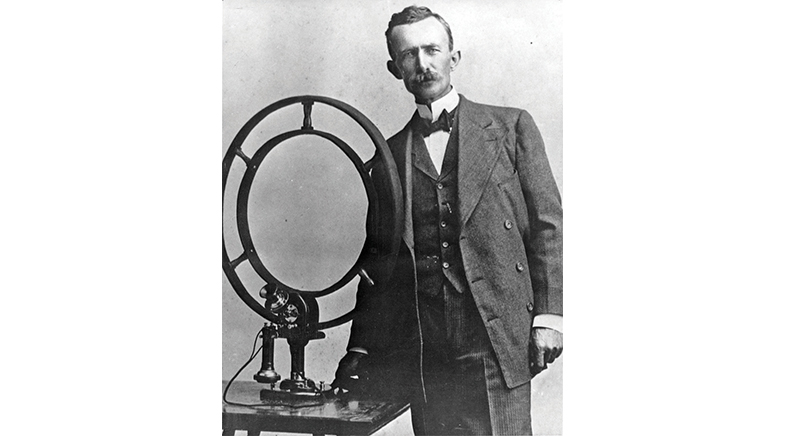Why geometry is gorgeous
-
- from Shaastra :: vol 01 edition 02 :: Jul - Aug 2021
Jordan Ellenberg opens our eyes to the joyous geometry of everyday things, and offers us new ways of looking at the world.

My late mother-in-law was a gorgeous woman. She was also a professor of psychology, a well-known writer in Marathi and the spirit behind a group of women who sang and told stories about Sant Dnyaneshwar. She rounded out her interests and personality with a love for geometry. Every now and then, I'd offer her some intriguing puzzle that had foxed me. Her eyes would light up, she'd settle into a chair and plug away, invariably beating me – the guy with engineering and CS degrees – to the solution.
There's something of that polymath spirit in this book, which is why, as I read it, memories of her cropped up every now and then. I think she would have delighted in greedy algorithms, or prime numbers and cicadas, or the "geometry of our way of speaking"; delighted, in other words, at how Jordan Ellenberg shows us geometry everywhere, how he gives geometry new shape and dimension altogether.
The challenge writers face - "how can I give my reader something to think about?" - is in some ways the mirror image of the anticipation their readers bring along: "what am I going to get out of this book?" On nearly every page in Shape, you can sense Ellenberg tussling with and relishing that challenge. He seeks above all to take an ancient discipline - his book starts with the great Euclid's Elements - and offer you new ways of looking at it. Those then offer you new ways of looking at our world.

You might say: "But this is geometry he's talking about! What new ways?"
Well, this is no longer about congruent triangles and the sums of angles and proving some possibly obscure little truth from "first principles", satisfying though that may be. Ellenberg goes beyond that to all manner of subjects he sees geometry in, so much so that after a point he stops mentioning the subject. For by then he's writing about geometry almost as a way of thinking, of reasoning about the world. In fact, as early as on page 2, he drops a broad hint that this is where he's headed: "Geometry is still there when the rest of our reasoning mind is stripped away."
One way I could give you a sense of what Ellenberg means is the sheer range of the subjects he explores. Here's a sample: Cicadas and primes, how sets in tennis are won and lost, the "purely abstract space of the English language", the new Pepsi logo, and nefarious efforts to define electoral constituencies. There's geometrical thinking in all of that, and Ellenberg delights in opening doors, and minds, to this smorgasbord.
You'll find geometry in the unlikeliest topics: Cicadas and primes, how sets in tennis are won and lost, and the efforts to redraw political constituencies.
THE RANDOM WALK THEORY
For example, early on, Ellenberg tells us of a 1904 lecture that he calls "the first glimmer of a new geometric theory that was about to explode into physics, finance, and even the study of poetic style: the theory of the random walk." Yet, the speaker wasn't a mathematician. It was the Almora-born doctor, Ronald Ross, who won the Nobel Prize in Medicine in 1902 for his research into how malaria is transmitted. His lecture was titled "The Logical Basis of the Sanitary Policy of Mosquito Reduction".
In such a lecture, just what was geometric?
Ross was speaking of ways to eliminate mosquitoes. What if you marked out a circle and drained all the water bodies inside it? Mark a large-enough circle and you might just produce a mosquito-free, thus malaria-free, region. Ross wondered about a mosquito born outside this circle: "During its life it wanders about... After a time it will die. What are the probabilities that its dead body will be found at a given distance from its birthplace?"
Not that Ross was on hands and knees scouring his circle for dead mosquitoes. But he was asking a thoroughly mathematical, or geometric, question. Given a mosquito's unpredictable wanderings - an instance of what came to be called a random walk - what is the chance that it will turn up in the centre of our marked circle? Or put it like this: how large would the circle have to be for this probability to become negligible? Because that's how we'll know how efficient our efforts to free the region of malaria have been.
Think of mosquito flight lines and turn angles, and suddenly the insect's meandering is a geometric construct that we can analyse mathematically. Of a simulation of ten thousand mosquito flights he once followed, Ellenberg writes: "Sometimes the mosquito sticks around one area for a while... sometimes (it) appears to acquire a brief sense of purpose and manages to cover some distance. Watching animation of this process, I have to tell you, is unreasonably captivating."
Sure, you say, he's a mathematician! Of course he finds this stuff "unreasonably captivating"! And yet the power and charm of this book is that Ellenberg manages to captivate his reader as well, and I think that's because of the smorgasbord he offers us. In particular here, he's right about random walks: the idea - the mental image, really - turned out to be an enormously useful tool in all kinds of fields, some of which you wouldn't even think of as mathematical.
What's also refreshing about the book is that Ellenberg pulls no punches, names names. Like Republican politicians intent on redrawing political constituencies to ensure their electoral dominance. Like a certain "US Government official" named Trump.


THE 'PEPSI RATIO'
Like Pepsi. Towards the end of an examination of the number φ (phi, pronounced 'fee'), often referred to as the "golden ratio", he tells us how "put a φ on it" became a mantra for lazy marketing. "You could buy jeans whose golden proportions were flattering to your rear", for example, or lose weight by "eating proteins and carbs in golden-ratio proportions." Yet this empty-headedness pales in the face of "the greatest work of mystical geometric hoo-hah ever produced": Pepsi's "globe" logo, launched in 2008.
To Ellenberg, a 27-page booklet from the marketing firm, the Arnell Group, managed to suggest that Pepsi and the golden ratio are natural partners (!) because "the vocabulary of truth and simplicity is a reocurring phenomena (sic) in the brand's history." If that frantic hyperbole isn't enough to make you gag, the Arnell rag placed the logo at the triumphant climax of "five thousand years of science and design including Pythagoras, Euclid, da Vinci, and somehow the Möbius strip." And, of course, it also tried, not very subtly, to offer a new name for the golden ratio: 'The Pepsi Ratio'.
Somehow the name hasn't caught on. More seriously, in this passage, Ellenberg delves into what we mean when we call numbers like φ and π "irrational". That's a fundamental notion in number theory, the irrational number. But he uses a geometric view of numbers to explain the notion, and in a way that even a schoolkid familiar with fractions will understand. Along the way, we learn that there are fractions that are relatively good approximations for π – 22/7, or 355/113 – and other irrational numbers.
There's a purpose to this analysis. Ellenberg is leading up to something that, to me, is the beating heart of this book, but just a glimpse of the spirit that animates the mathematician in love with his craft. "Here's a beautiful fact," he writes, and note what he calls "beautiful": "in a way that can be made quite precise, φ, out of all real numbers, is the one that's least well approximated by fractions." In fact, φ is "the most irrational irrational number. That, to me, is a jewel."
The golden ratio appears in nature, such as in the nautilus shell. Given its aesthetic quality, designers and architects invoke it in everyday objects – but marketers hype it up, as Pepsi did with its 'globe' logo, launched in 2008.
Truly, those lines stopped me in my tracks. Now it's no secret that mathematicians see elegance and beauty in places that would be a mystery to people from outside the field. But here Ellenberg leads us to the jewel and tells us just why he finds it beautiful. It speaks of the spirit that skeins through this book like the Milky Way on a starlit night. To me, it's almost, maybe even unreasonably, moving.
There are also Ellenberg's experiments with a piece of software called Word2vec. Feed it a heap of text and it produces a thicket of connections between English words, established by how we use them in the language. Ellenberg calls this a "geometry of our way of speaking".
One of the lines in this geometry is a "feminization vector" that takes you from "he" to "she", from "King" to "Queen". Then you try it on "stunning", and it takes you to "gorgeous". He wonders as I wondered: does this mean "that in some mathematical and universal and utterly objective sense, gorgeousness is the feminine version of stunningness?"
Certainly not. Instead, what it suggests is something slightly different: that "when English speakers want to talk about stunningness and we're talking about a woman, we have a statistically detectable habit of saying 'gorgeous'."
The man is so right. When I think of so many beautiful women I've known, the word "gorgeous" springs to mind. Case in point: check the first sentence of this review.
She would have loved this book.
Once a computer scientist, Dilip D'Souza now writes on mathematics - and other beautiful things.

@DeathEndsFun
Have a
story idea?
Tell us.
Do you have a recent research paper or an idea for a science/technology-themed article that you'd like to tell us about?
GET IN TOUCH















